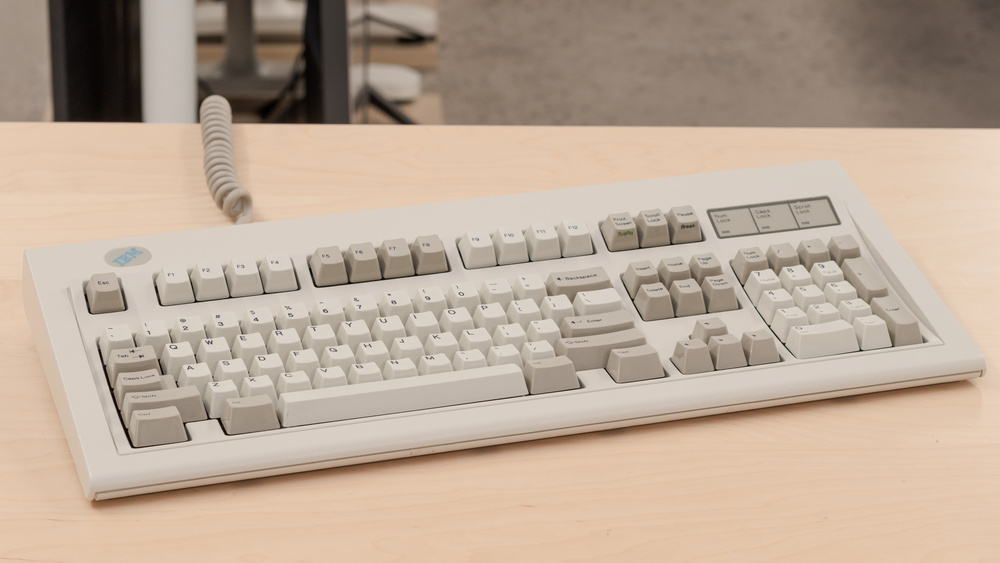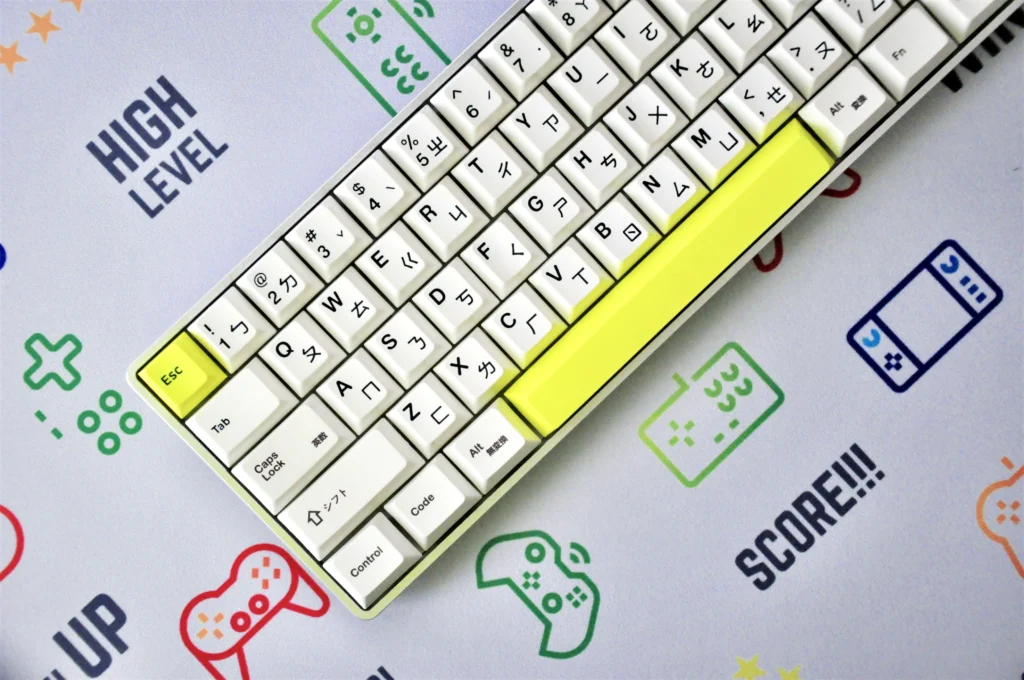Table of Contents
Does a mechanical keyboard make a difference in gaming? If it does, is this a difference worth paying extra money for? What other keyboard features should be kept in mind for gaming purposes? Let’s dive in, starting with the most pertinent question:
What are Mechanical Keyboards?
Basically, a “mechanical” keyboard is just a keyboard that’s built to rely on mechanical switches in contrast to other, cheaper, more commonplace keyboard designs. Mechanical keyboards have increased in popularity over the years, though, and have even started appearing in high-end laptops.
What Makes Mechanical Keyboards Different from Other Keyboards?

The Classic IBM “Model M” Mechanical Keyboard. If a keyboard appeared to you in a dream, it probably looked something like this, since most keyboards still do.
Mechanical
- A variety of mechanical physical “switches” are available.
- A “switch” will have a fixed minimum activation distance and degrees of noise + haptic feedback.
- Generally somewhat heavy, even if wireless.
- Fairly quickly or totally quiet, depending on build.
Membrane (Rubber-dome)
- The cheapest and most commonplace keyboard design. Surprisingly reliable.
- Construction often mimics the design of old mechanical keyboards like the IBM Model M.
- Usually a little noisy, though this can vary. The cheaper cost of manufacturing allows for a wider variety of lower-budget peripheral designs using rubber-dome switches, though.
- High-end features are usually available for cheaper on a rubber-dome compared to a mechanical. Chiclet value proposition varies unless you’re really into wireless.
Chiclet
- Low-profile, low-to-medium noise level.
- Slim laptop keyboard buttons. Or, like, weird big soft calculator buttons. You get the idea.
- Technically still a rubber-dome keyboard. However, the sensors beneath the rubber are usually flat.
Are Mechanical Keyboard Worth It For Gaming?
In my personal years of gaming experience on a variety of keyboards…including a laptop keyboard that had its keys torn off, I would say “absolutely”. Tactile feedback is great for boosting the immersion factor of any gaming or book-reading experience, and that’s part of what makes gaming on console such a fun time to begin with.
I feel that mechanical and chiclet keyboards provide the best experience for most people, but if you see a cool-looking membrane gaming keyboard that appeals to you…by all means. Seize that keyboard, especially if it’s on sale.
Mechanical Switch Type Recommendations For Gamers
Blue Switches Recommended For…
- Blue-type switches are popularized by Cherry MX Blue Switches.
- Cherry MX Blue Switches are known for being distinctly loud and clicky, but with nice-feeling bounce back in turn.
Red Switches Recommended For…
- Red-type switches are popularized by Cherry MX Red Switches.
- Cherry MX Red Switches are known for being fast, quiet, and smooth. Generally considered ideal for gaming purposes, at least for raw APM in frantic moments.
Brown Switches Recommended For…
- Brown-type switches are popularized by Cherry MX Brown Switches
- Cherry MX Brown Switches are something of a blend between the quiet responsiveness of a Red and the delayed thunk-i-ness of a Blue.
A Parting Note on Unique Mechanical Switches
With all the main questions regarding mechanical keyboards for gaming tackled in this article, I actually wanted to leave room for a note on unique mechanical switches outside of the three main categories listed above. If I were truly depraved and lazy, I would simply skip this part entirely and throw you to the marketing wolves, but I do feel like it’s worth talking about a few current unique switches and what actually makes them unique.
I think Razer’s Opto-Mechanical Switches and Logitech’s Romer-G Mechanical Switches are of particular note for gamers. While I myself am a proud Blue Corsair K70 RGB PRO Enjoyer, Opto-Mechanical and Romer-G Switches are genuinely built different and thus worth some deeper discussion.
Razer’s Opto-Mechanical Switch is actually kind of what it sounds like, if you’re keyed into what an optical sensor in a mouse is. Basically, using an optical sensor combined with a mechanical switch design makes an Opto-Mechanical Switch able to come in a variety of constructions while still actuating near-instantly. Pretty nice for gaming!
Meanwhile, the Logitech Romer-G Switch is…well, basically Logitech’s version of Cherry MX Brown! That’s the thing about “other” mechanical keyboard designs. Unless you’re working with or subverting a standard set by Cherry MX (usually Red/Blue/Brown), you’re probably making your own that ends up being sort of similar to one of those or is built entirely differently.
Video games are a little bit like that, too.

